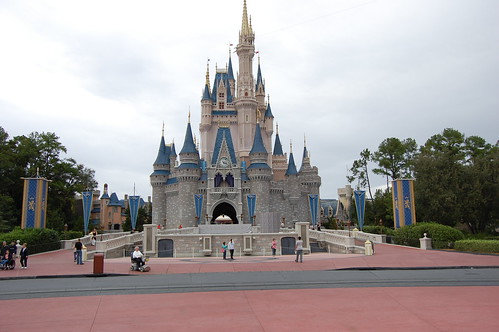
The Disney theme parks and resorts compete with other forms of entertainment, lodging, tourism and recreational activities. Universal's Islands of Adventure and Universal Studios are Disney's direct competition within the Theme Parks business.
Studio Entertainment division
Disney's Studio Entertainment business competes with all forms of entertainment. A significant number of companies produce and/or distribute theatrical and television films, exploit products in the home entertainment market, provide pay television programming services and sponsor live theater. They also compete to obtain creative and performing talents, story properties, advertiser support and broadcast rights that are essential to the success of their Studio Entertainment businesses.
Consumer Products division
Disney's Consumer Products business competes in its merchandise licensing, publishing, video game and retail activities with other licensors, publishers and retailers of character, brand and celebrity names. Based on independent surveys, Disney believes they are the largest worldwide licensor of character-based merchandise based on retail sales.
Analysis of potential new entrants
Walt Disney Company has been able to grow over a long period of time, and has developed from within the departments of Research and Development, Marketing, and Finance. By relying on past experience, company officials know to a large extent what the target customer wants. As Disney pretty much dominates the family entertainment market, it will be very difficult for new organizations to develop brand recognition/identification, and product differentiation. Disney has focused on market diversification for years and the company covers a wide array of products and services.
Analysis of substitute products
The threat of substitute products or services is moderate to low. Obviously, other cartoon figures, theme parks, and movies can penetrate the market in which Disney is operating in, but I do not believe that this is representing a significant threat. The Disney Company has already placed price ceilings on many of its product lines, and should be able to compete with new competitors.
Analysis of suppliers
The bargaining power of suppliers is moderate. As the Disney Company is operating in a highly differentiated and unique industry with high switching costs associated with operations the suppliers are dominated by a few companies and is most probably very concentrated. However, Disney is a unique and important customer of many of the suppliers. Furthermore, the size of the company may certainly be a great advantage. By being able to order large volumes of unique products from unique suppliers, will create a dependency relationship in the industry.
Analysis of buyers
The bargaining power of customers is high in the service and in the entertainment industry. Since a large number of customers are needed to make Disney's operations run smoothly, the customers have certain powers. For instance, if the price on a particular home video is too high, customers may be reluctant to spending the money needed to purchase the product. Another example is the entrance fee charged at Disney's theme parks. Furthermore, the entertainment industry does not save the buyer money. Instead it is designed in a way that it will make the buyer spend more. A majority of Disney's product mix focuses on intangible returns on the buyer's money. The case that some customers may not realize that they are getting such a return may increase the bargaining power of the customers.
ไม่มีความคิดเห็น:
แสดงความคิดเห็น